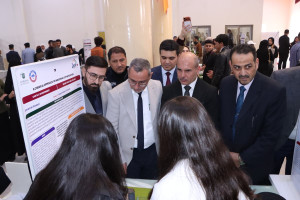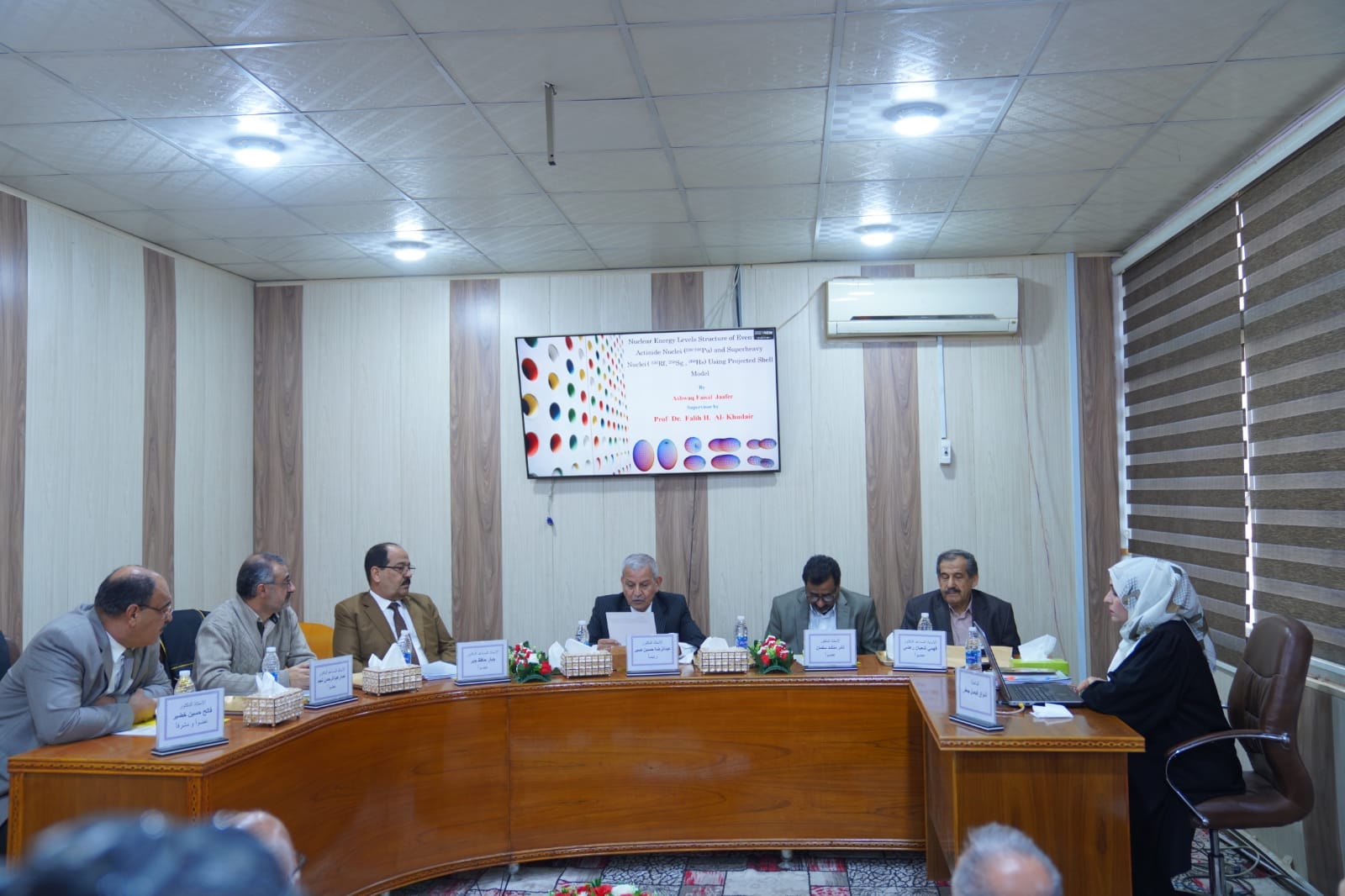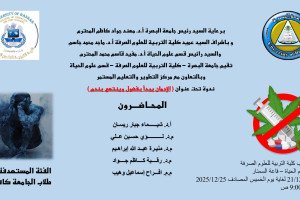
The College of Education for Pure Sciences discussed a PhD thesis at the University of Basrah on theoretical nuclear physics
The thesis presented by the researcher (Ashwaq Faisal Jaafar) included
The nuclear structure properties of actinide nuclei and some superheavy nuclei were studied using the Projected Shell Model (PSM) and the Interacting Boson Model IBM. Experimental results of some actinide nuclei indicate a set of important properties of the spin beam and other excited beam. Plutonium isotopes (236-246Pu) were studied using the PSM model. The calculations are based on the Hamiltonian PSM model which includes electric quadrupole (Q-Q) interactions and residual interactions resulting from mono- and dipole-pairs of nucleons. The calculated energy levels of the yrast beam were compared with the experimental results and consistent results were obtained. Crossing between the quasiparticle 2- and the ground g-band in the higher regions of the total angular momentum is discussed. The kinematic moment of inertia j (1) and the dynamic j (2) of plutonium isotopes were studied, as well as the electric transition probability B (E2) and the gyromagnetic g-factors for these isotopes were calculated. To study the other spin properties of plutonium isotopes, the IBM-1 interacting bosons model was applied with the addition of the cubic terms of the Hamiltonian. The results of the energy levels and the potential energy surfaces in the 236-246Pu isotopes were discussed, where it was noted the effect of the limit L = 3 added to the Hamiltonian on the voltage form in these nuclei. From the foregoing, it is clear that the isotopes 236-246Pu belong to the rotational limitation SU(3).
In the last part of this thesis, the spin properties of isotones 260Hs 256Rf, 258 Sg with number of neutrons N = 152 were calculated and studied using PSM. The energy levels of the yrast beam were calculated and compared with the available practical values, as well as the beam patterns and rotational alignments arising from the nucleons close to the Fermi level. And then discuss Nielsen diagrams for the proton and neutron as a function of the distortion coefficient.
Thesis objectives:
Study of the rotational structure of the Yrast band levels of the actinide nuclei (Plutonium 236-246Pu) and the superheavy nuclei (Rutherfordium 256Rf, Seaborgium 258Sg, Hassium 260Hs) using the Projected Shell Model PSM.
Using the Interacting Boson Model + Cubic term IBMC to study the energy levels and potential energy surfaces of plutonium isotopes 236-246Pu.
A study of the effect of the intersection of rotational beams (2-quasiparticle excitation energy) with the ground beam on the composition of the Yrast band.
A study of the effect of the proximity of the Nielsen levels to the Fermi level on the rotational energy beams.









